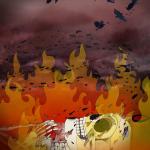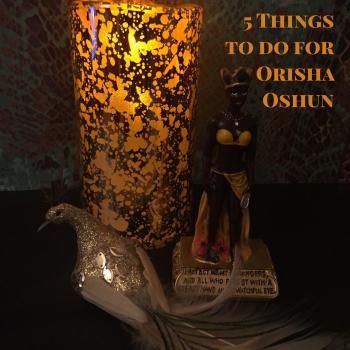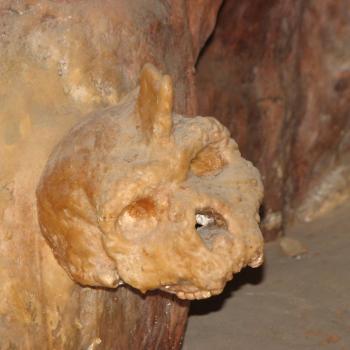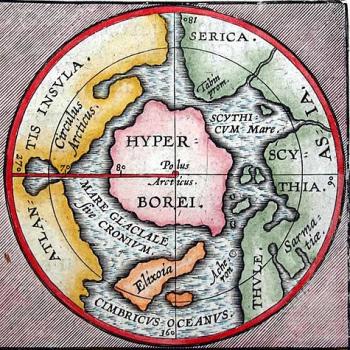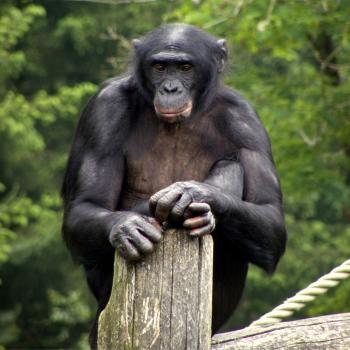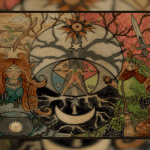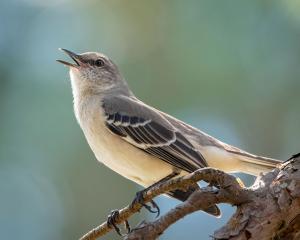
A profound connection between birdsong and human language has been identified by recent linguistic and genetic studies, several thousand years after creation myths across cultures made the same link.
The Hopi story of creation describes a mockingbird leading Native Americans out from the underworld with its song and then giving each tribe a language. The Osage of Kansas say their ancestral souls were once without bodies until a redbird volunteered itself to make human children by transforming its wings into arms, its beak into a nose and by passing on the gift of language.
The sound of birdsong coincides with the emergence of humans in creation myths from Africa to Asia and North America.
Songs of creation
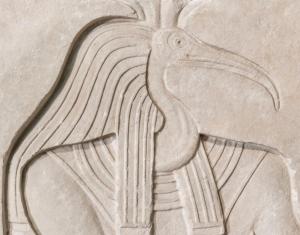
On the island of Borneo, the Iban say two birds shaped earth into people and brought them to life with bird calls. In Japanese myth, the roosters of the Eternal Land crowed when the sun goddess and storm god created people. The Wapangwa of Tanzania say the wind and air gave birth to singing birds that descended to earth and turned into people and animals.
The Bambara of southern Mali, Guinea, and Senegal tell of the crested crane uttering two words at the birth of language, “I speak.” The voice of the ancient Egyptian ibis-headed god Thoth caused the cosmic egg to hatch. The Seri tribe of the Gulf of California believe the “Ancient of Pelicans” created the world with supernatural wisdom and melodious song.
If early humans developed their own language by imitating birdsong, it’s nothing short of incredible that this linguistic history was expressed in creation myths several hundred thousand years after the fact, from Africa to Kansas.
Creation myths could have told an egocentric story of how humans were the ancestors of birds and taught them how to sing, but instead they got it right. Evolving from dinosaurs, birds predated humans by 150 million years. Did each culture independently link birdsong to language or was the concept diffused across cultures and time? Perhaps some of both.
More importantly, the storytellers who forged these myths of creation perceived a deep and fundamental connection between humans and birds, accompanied by a profound sense of awe and respect.
The wisdom of bird language
The mysterious wisdom of bird language was celebrated around the world and down through the millennia in myths, folktales, religious parables and heroic legends. Birds were virtually always cast in the role of messenger or agent of a creator god, bringing messages and conferring gifts to humanity from the spirit world.
The ancient Greeks based four letters (lambda, delta, upsilon and psi) on the flight formations of cranes. In Egyptian Arabic, ancient hieroglyphs are known as “the alphabet of the birds.” In the mystical traditions of both the Hebrew Kabbalah and the Sufi branch of Islam, the secret language of birds holds the key to knowledge and wisdom.
Bird language was said to be known by King Solomon, the Greek god Heracles, the prophetess Cassandra, the Oracle at Dodona, and the Greek philosopher Democritus. The Norse god Odin and the sun god Apollo each had a pair of ravens who kept them informed of h
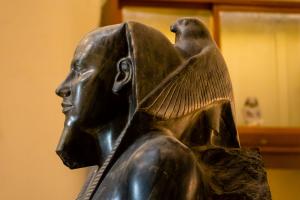
uman events. A statue of the Pharaoh Khafre (builder of the Pyramid at Giza) shows Horus the falcon perched on his shoulder.
The prestige and authority of healers and shamanic figures depended on their knowledge of bird language. A Greek myth tells of the esteemed physician Melampus, who was able to treat his patients only after listening to a pair of vultures sitting nearby, chatting about the best cure. The dialogue between the vultures was quite specific, and because Melampus knew the language of birds, he simply followed their advice. When Apollo sent a plague to the Greeks in The Iliad, they turned to “the best expert on birds, who knew things present, future, and past.” After listening to birds, the expert called for a sacrifice to Apollo and the plague stopped.
A bizarre story of how a dove passed its knowledge to a pope in the late 6th century was recorded in The Catholic Encyclopedia by Pope Gregory I’s secretary, who wrote that he observed the pope with a living dove’s beak between his lips. When the dove removed its beak, the pope began dictating to the secretary, who was supposed to be out of sight behind a curtain.
The widespread belief that birds had knowledge of the future was a primary reason why it was so important to understand their language. Birds are virtually always positive figures in myth but they can be ominous as well; cross-cultural folklore describes birds predicting an imminent death by appearing on a doorstep or calling outside a window.
Avian oracles
The idea that birds could see the future may stem from the observation of entire flocks scattering on a sunny day for no apparent reason, until four or five hours later a catastrophic hurricane whips through the area. How did the birds know the storm was coming?
In recent decades, ornithologists tracking bird migration have recorded entire flocks stopping suddenly and returning from where they originated to avoid threatening storms hundreds of miles ahead. It seems birds can hear the low frequency sound of distant thunder and perceive changes in barometric pressure.
Without the mantle of scientific knowledge it’s no great surprise our distant ancestors concluded that birds could predict the future. The Romans once wrote letters on seed kernels, tossed them on the ground, and divined the future based on the order that birds picked them up.
The Greek god Zeus was said to create the Sacred Grove at Dodona where a dove carrying the wisdom of the Egyptian pharaohs settled in a grove of oak trees. Priestesses made predictions of the future after listening to the secret language of the cooing dove and rustling oak leaves, speaking together.
Ancient flutes and birdsong
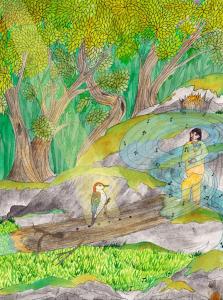
Among the world’s oldest musical instruments, the flute has long been used to imitate songbirds. A five-hole flute made 42,000 years ago from the wing bone of a griffon vulture was found in 2008 inside Hohle Fels Cave in southern Germany.
In Papua New Guinea, the Gimi language uses the same word for bird and flute (nimi). Across the country, different tribes engage in a variety of rituals but they all follow an ancient tradition of men playing flutes so that women and children can hear the music but not see the players. The intended effect is for listeners to believe they’re hearing the songs of mysterious, supernatural birds.
A legend of the Brulé Sioux tribe in Wyoming describes a young man who dreamed of a singing woodpecker and awoke the next morning to see a woodpecker singing the song in his dream. The bird flew off a little way and the young man followed until they arrived in a clearing where the hollow trunk of a dead tree lay on the ground.
The woodpecker had made regular holes up and down the length of the hollow log, and as the wind rose and blew through the hollow log, beautiful melodies emerged. The young man learned to make a much smaller and neater version of the hollow log with holes in it, and won over his sweetheart with his music. Soon all the young men were making flutes.
Birds in Classical scholarship and music
Classical scholars gave birds credit for inspiring the first musicians. The Greek Athenaeus wrote, “… the invention of music was conceived by the ancients from the sounds of birds singing in the wild.” In his classic On the Nature of Things, the Roman philosopher Lucretius wrote, “Thus birds instructed man, and taught them songs before their art began.”
Birds were also associated with Beethoven, Mozart and other classical composers. Beethoven was quoted telling a friend that he wrote the Scene at the Brook on one of his daily walks, with “the yellowhammers above, the quails, nightingales, and cuckoos all around, composing with me.”
In one of Mozart’s journals, he wrote of teaching his pet starling to sing the opening theme of a piano concerto. Mozart was so fond of the bird that he held a funeral when it died and composed “A Sextet for Strings and Two Horns” that resembled the starling’s song.
A funeral procession to honor a beloved raven that lived its life at the temple of Castor and Pollux in Rome was longer than many held for Roman senators, according to the writer/naturalist Pliny. Leading the parade of mourners was a flute player followed by two Ethiopians carrying the raven’s funeral pyre.
Birds in popular music
From seagulls to crows and the disco duck, birds have appeared in song titles and band names for generations in modern western culture, from The Byrds to The Yardbirds, Atomic Rooster, The Partridge Family, Paul McCartney & Wings, The Eagles, A Flock of Seagulls, The Black Crowes, and Counting Crows.
Some of the most memorable rock ‘n roll songs invoke the mythic avian quality of transporting the soul, including Lynryd Skynyrd’s “Free Bird” and “Fly Like an Eagle” by The Steve Miller Band.
In 1984, the Prince song “When Doves Cry” hit #1 on the Billboard Hot 100 and stayed there for five weeks. At his home in Minneapolis, Prince kept two mourning doves, which symbolize the soul of a deceased relative or friend come back to comfort the living. The migratory mourning dove was the bird perched on the neck of a guitar on the poster advertising the Woodstock concert in August 1969.
From the cross-cultural myths of ancient cultures to Mozart and Woodstock, the songs of the avian world have been a guiding voice for humanity since our humble beginnings.
(Ben H. Gagnon is the author of Church of Birds: An Eco-History of Myth and Religion, to be released in March 2023 by John Hunt Publishing, London, now available for pre-order.)

